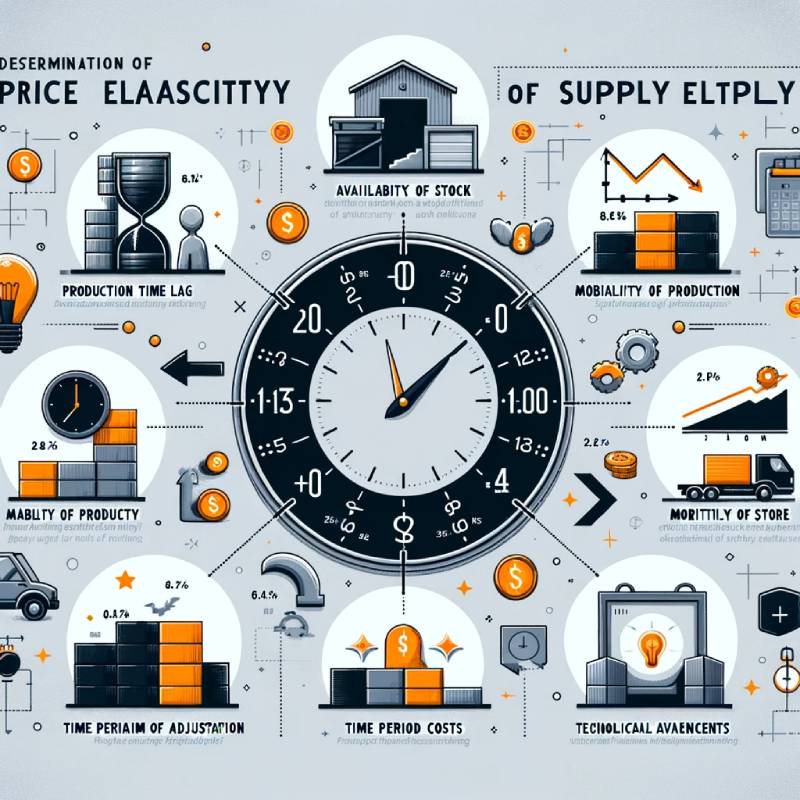The price elasticity of supply (PES) is a measure used in economics to show how the quantity supplied of a good or service changes in response to a change in its price. Specifically, it quantifies the percentage change in quantity supplied divided by the percentage change in price. Essentially, it provides an understanding of how sensitive the supply of a product is to changes in its price.
Formula:
The formula for calculating the price elasticity of supply is:
\[ PES = \frac{\% \text{ change in quantity supplied}}{\% \text{ change in price}} \]
Determinants of Price Elasticity of Supply:
1. **Production Time Lag**: The time it takes for producers to adjust to a change in market conditions is a significant determinant. Goods that can be produced and brought to market quickly tend to have a more elastic supply.
2. **Availability of Stock or Inventory**: If a supplier has a significant stock of goods ready to be sold, the supply is more elastic because they can quickly increase the quantity supplied in response to a price increase.
3. **Mobility of Factors of Production**: When the factors of production (such as labor, capital) can be easily moved or reallocated from one production activity to another, the elasticity of supply is higher. This mobility allows producers to respond more swiftly to price changes.
4. **Ability to Store Goods**: The ease with which goods can be stored without spoiling or becoming obsolete affects supply elasticity. Goods that can be stored easily and for longer periods without losing value tend to have more elastic supplies because producers can adjust their supplies to the market without immediate production.
5. **The Time Period of Adjustment**: The elasticity of supply tends to be different in the short run and long run. In the short run, firms have limited ability to change their production levels, making supply less elastic. Over the long run, firms can adjust all their inputs, adopt new technologies, or enter or exit the market, making supply more elastic.
6. **Production Costs**: The nature of production costs plays a crucial role. If production costs increase significantly as output increases, then the supply is likely to be less elastic. Conversely, if costs do not rise much with an increase in output, the supply can be more elastic.
7. **Technological Advancements**: Improvements in technology can make the supply more elastic by reducing production time and costs, making it easier for producers to adjust to changes in price.
The price elasticity of supply is a crucial concept in understanding how markets function. It affects pricing strategies, tax policies, and how markets respond to changes in demand and supply conditions. Knowing the determinants of supply elasticity helps policymakers and businesses predict and manage the impacts of market changes more effectively.
Also read ”Calculating the Price Elasticity of Supply (PES)” and take this Quiz.

